The Weekly Mash, Friday 10th October
Chivas goes clear, and I recover from four shows in four weeks with a happy smile. Read on …
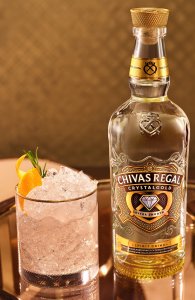
Clarity of thinking?
White whisky? It’s hardly new. The skailk, the cratur, the dram of clearic in the distillery. There’s moonshine in the US, New Born in Japan. You could make a case for poitín being a variant. You could argue that Chivas Regal’s newest arrival Crystalgold (one word) spirit drink is following on from this centuries old tradition. Who needs wood?
Well, actually Crystalgold does. It’s colour that isn’t required. According to the company, it has been removed by a ‘bespoke filtration process that extracts the colour from golden, oak-aged spirit’, resulting in a ‘crystal-clear, colourless and ultra-smooth liquid that retains the rich depth of flavour consistent with the Chivas Regal house style, while offering the versatility and mixability of a clear spirit.’
This allows it to ‘unlock new possibilities for how and when the brand can be enjoyed…[lending] itself to longer, fresher drinks, opening the door to increasingly popular early evening occasions, traditionally the domain of clear spirits like tequila.’ Ever had a Highball? A Whisky Sour?
Let’s try and put this in context. New Born is just that. An indication from new Japanese distilleries of the building blocks of flavour in what will become their style. Moonshine and poitín look back to the rich heritage of illicit distillation. Drinking the clearic at the distillery was part of the daily ritual, as was the early morning skailk.
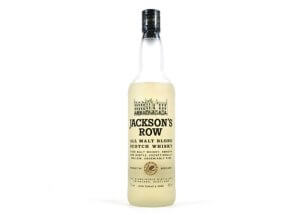
Crystalgold’s lineage is different. It follows on from Jackson’s Row and J&B -6˚, a distilled cousin to Miller Clear (‘’full-flavoured but without heaviness.”) The first of this trio was launched in the 1990s as a response to Scotch losing sales to vodka. Take some Glenkinchie (and other malts) in knackered casks, filter out colour and the vodka drinkers will be easily wooed. Or so the theory went.
Michael Jackson described it in his 1999 Malt Whisky Companion as being ‘old enough to be mellow and heavily filtered for “a pure smooth, unforgettably clean [sic] taste,” to be sold cold’. It soon disappeared.
J&B -6˚ was launched in 2006 as an attempt to revive a flagging brand and to entice younger drinkers who had been consuming vodka or tequila, to try a Scotch without any of the spirit’s negative associations (flavour, colour). It tasted like new make and was withdrawn in 2007.
The reason that they failed was because they were still whisky to those who didn’t drink whisky and nothing like whisky to those who did. Falling between two stools.
The idea of lightening whisky to find new drinkers is an interesting thread. When Bourbon was losing share to Scotch in the 1960s, Kentucky distillers’ response was to lighten it – make it more ‘Scotch-like’. In doing so, they lost what made Bourbon special – boldness, spice, oak, sweetness. Sales continued to slide.
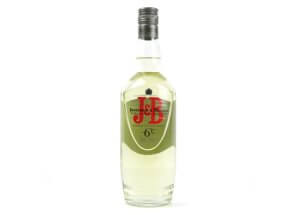 In 1990s Japan’s distillers, seeing younger drinkers turning to shochu, launched new wispy, ethereal drams. They too failed. Not sufficiently whisky-like for existing drinkers, still whisky for the new shochu lovers. Ultimately, whisky wasn’t saved in America, Japan, or Scotland by lightening the spirit, but by flavour.
In 1990s Japan’s distillers, seeing younger drinkers turning to shochu, launched new wispy, ethereal drams. They too failed. Not sufficiently whisky-like for existing drinkers, still whisky for the new shochu lovers. Ultimately, whisky wasn’t saved in America, Japan, or Scotland by lightening the spirit, but by flavour.
Is whisky losing drinkers to white spirits today? No. All spirits are struggling as a result of broader societal and economic shifts. New ideas and new narratives, and conceivably new products, are required but not by trying to steal another category’s clothes.
The thinking behind Crystalgold suggests capitulation. Rather than trying to find new ways of drinking, mixing, talking about and selling whisky, the answer is making it something it is not. If the answer to the question, ‘what is the answer for whisky’s current issues?’ is ‘Not Whisky’, then we’re doomed.
Confidence guys, have confidence. Be Whisky.
———————

Show and Tell
Four shows in four weeks and I’m broken. I don’t know how those brand ambassadors do it. The always excellent Midlands Whisky Fest [link] was followed by a quick trip to the Abergavenny Food Festival to talk Japanese whisky (and pick up a footed yunomi made by Tim Lake and sufficient provisions for a family feast before a quick trip to Copenhagen and thence to Whisky Live Paris .
This is the show which has the greatest range of spirits – this year there was almost as much rum – as well as an ever-growing representation of French whisky producers as well as a host of drams you don’t find over here. It’s big, it’s busy and it’s serious – spittoon use is second nature, rubber legs almost unknown.
If the show is calm, even sedate outside the hordes gather every night for the bacchanal outside on Cocktail Street where brands’ pop-up bars sling drink to a ear-splitting beats. Here is the much-needed release after a day of studiousness. Whisky can play is both worlds without worry.
Then it was onwards to Whisky Show London. I wasn’t sure quite what to expect this year. There is a undercurrent of nervousness in whisky at the moment – production being scaled back, layoffs, some stills stopping completely. Would any of that seep into the show, dampen the atmosphere? Less celebration and more sober(ish) reflection? Far from it.
Friday night used to be a quiet, gentle amble around the stands, an easing into the craziness. This year started like a frenzied party which didn’t stop all weekend. This is always a hectic, crowded show. This year it had an indefinable buzz. It was the industry at its best, a sense of how, if we all work together, we can get through these tougher times.
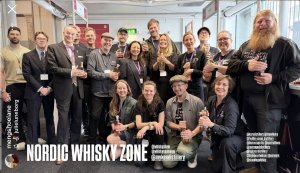
This collegiate air was seen in the Nordic Zone where a dozen producers had joined together to show the breadth and depth of the whiskies being produced across this region. Everything from Thy’s farm distillates, Hven’s investigations into grain and yeast, to Copenhagen’s and Agitator’s precision-tooled offerings, Myken’s remarkable 10-year-old, Feddie’s clarity, and (a hit of the show) the first Arctic barley release from Aurora. Diversity of approaches, but a singularity of purpose – better together.
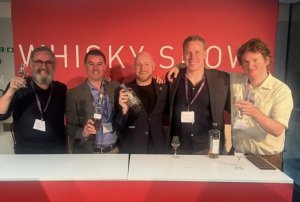
It was there too in an Irish Main Stage session with Boann’s Peter Cooney, Brendan Carty from Killowen and Shane McCarthy from independent bottler, Two Stacks. Again a theme was diversity of flavour as well as the ever-deepening links to Irish culture which the best of the new Ireland are drawing from (I’d include the excellent first release from Donegal’s Ardara and releases from Blackwater as well. ‘Whiskey is our intangible and tangible cultural asset,’ said Brendan Carty. He’s right. It’s tough in Ireland at the moment, but the resolve is strong.
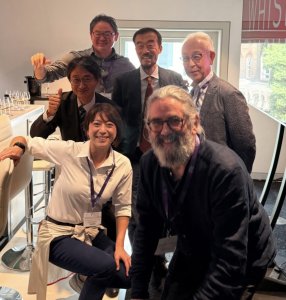
Japanese producers were together In Paris and London, talking openly about the future and candidly about the challenges their category faces. ‘Fraudulent whiskies must be stopped’, ‘our image is being damaged’ are phrases that I have never heard at a Japanese class before – but they needed to be said. Here were producers confronting the issue over lack of legislation and changing it.
When I started in this game, none of the Japanese firms spoke to each other. Now they were on stage, friends, laughing and with a shared purpose – launching the logo which will be carried by all bottles from members of the JSLMA.
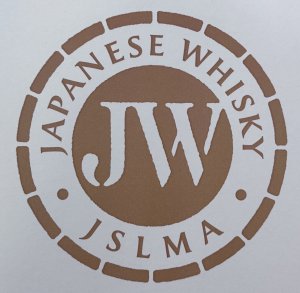
Now, finally, consumers will be able to identify 100% Japanese whisky at a glance (and by the way, this isn’t knocking world blends. They remain important and valid – they just need to be named as such.
Green shoots? Positivity? Yes, from people who understand the challenges, but believe in whisky.
———————

A Country For Old Men
With Glenmorangie demonstrating how firmly they have their finger on the pulse of the zeitgeist by hiring Harrison Ford, being followed by Laphroaig snaring Willem Dafoe, clearly the search is now for the next old, grizzled Hollywood actor to be the face of a brand. You can imagine the frantic meetings at Diageo seeking a balance to Sabrina Carpenter.
‘Harry Dean Stanton would be perfect!’
‘Sorry Nik, he’s dead’.
‘OK… Redford? Ah…’
‘Eastwood?’
‘He’s even older than Harrison.’
‘Could we persuade Clooney?’
‘A bit… mezcally?’
‘Quick, put in a call for Jeff Bridges … we need the Dude!’
—————————
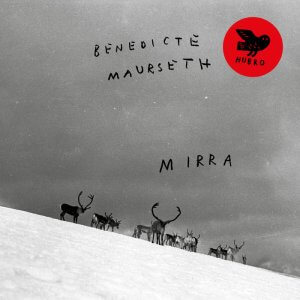
In My Ears
With the memory of Aurora and Myken’s Arctic whiskies fresh in the mind, let’s head to Norway in the company of Benedicte Maurseth who records on Oslo’s magnificent Hubro label. Her new release Mirra mixes field recordings of reindeer with Hardanger fiddle to create a mesmerising soundscape.